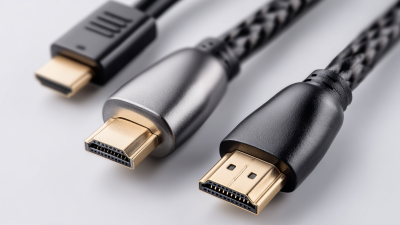Choosing the right LED lighting for your home is not just a matter of aesthetics, but also one of efficiency and sustainability. According to a report by the U.S. Department of Energy, LED lighting uses at least 75% less energy than traditional incandescent lighting, making it a crucial component in reducing overall household energy consumption. Furthermore, LED bulbs have a significantly longer lifespan, lasting up to 25,000 hours compared to 1,000 hours for incandescents. As homeowners seek more environmentally friendly options, the popularity of LED lighting has surged, with market forecasts predicting a market value of approximately $100 billion globally by 2025. This shift towards LED lighting not only helps in cost savings on utility bills but also contributes to lower carbon footprints, making the selection of appropriate LED fixtures essential for modern living spaces.

When choosing LED lighting for your home, it’s crucial to understand the various types available to make an informed decision. The LED market continues to thrive, with its estimated size around $12 billion in 2023, anticipated to witness a compound annual growth rate (CAGR) of 8.5% by 2032. This trend is driven by the growing awareness of energy efficiency and the long lifespan of LED products, making them a popular choice for residential lighting.
One notable segment within the LED market is eye protection lighting, valued at $145 million in 2022. It is projected to reach $275 million by 2030, with a CAGR of 8.5% from 2024 to 2030. This emphasizes the rising consumer demand for lighting solutions that minimize eye strain, especially with increasing screen time.
**Tips:** When selecting LED lighting, consider options that promote eye comfort, such as those with adjustable color temperatures. Opt for dimmable LED bulbs to enhance versatility in different living spaces. Additionally, explore offerings with added features like smart technology that allows for remote control and scheduling, elevating the convenience and efficiency of home lighting.

When selecting LED lighting for your home, it's essential to consider both brightness and color temperature. Brightness, measured in lumens, determines how much light a bulb emits. For general lighting in living rooms or kitchens, aim for around 2,000 to 3,000 lumens. However, for task-oriented areas like reading nooks or desks, you may want even brighter options, between 3,000 to 4,500 lumens, to ensure sufficient visibility.
Color temperature is another critical aspect, as it affects the ambiance of your space. Measured in Kelvin (K), lower temperatures (around 2700K) produce a warm yellow light, perfect for cozy areas such as bedrooms. In contrast, cooler temperatures (above 4000K) create a bright, energetic atmosphere ideal for workspaces. Consider the mood you want to set in each room when choosing your LED options.
**Tips:** When assessing your space, take note of the natural light available throughout the day, as this will influence your overall lighting needs. It's also helpful to use dimmable LEDs in multi-function areas, allowing you to adjust brightness based on the time of day or activity. Lastly, test different color temperatures in small areas before committing to a whole room; this ensures the selected lighting enhances your home’s aesthetic perfectly.
This chart illustrates the recommended brightness (measured in lumens) and color temperature (measured in Kelvin) for different spaces in your home.
When considering LED lighting options for your home,
energy efficiency and
cost savings are paramount factors to evaluate. According to the
U.S. Department of Energy, LED lights use at
least 75% less energy than incandescent bulbs, which can lead to substantial savings
on your electricity bills. For instance, if a typical household replaces just five
60-watt incandescent bulbs with equivalent
LED bulbs, they could save around $200 over the lifetime of the LEDs. This not only
reduces energy consumption but also lessens the environmental impact, making LEDs an
eco-friendly choice.
In addition to energy savings, the long lifespan of LED lighting enhances cost efficiency.
LEDs have a lifespan of approximately 25,000 to 50,000 hours compared to only
1,000 hours for incandescent bulbs. This longevity translates to
fewer replacements and lower maintenance costs over time. According to a report by the
Lighting Research Center, the initial investment
in LED fixtures is often recouped within two years due to these savings, making them
a financially prudent choice for homeowners looking to upgrade their lighting solutions.

Incorporating LED lighting into your home décor is an exciting way to enhance the aesthetic appeal of your space while maintaining energy efficiency. One of the first considerations is the color temperature of the LED lights; warm white tones can create a cozy and inviting atmosphere, ideal for living rooms and bedrooms, while cool white or daylight options may better suit kitchens and workspaces where clarity and focus are essential. Selecting fixtures that complement your existing décor can further elevate the overall design—think pendant lights with a modern twist or vintage-inspired sconces that hark back to classic styles.
Another aspect to consider is the placement of the lights. Strategic positioning can highlight architectural features or artwork, adding visual interest to your home. For instance, recessed lighting can provide a sleek, minimalist look, while LED strip lights can be used creatively under shelves or along staircases for a contemporary feel. Moreover, consider layering different types of lighting—ambient, task, and accent—to create a dynamic and versatile environment that adapts to various activities. With thoughtful integration of LED lighting, you can transform your home into a beautifully lit space that reflects your personal style.
When choosing LED lighting for your home, smart technology is revolutionizing how we illuminate our living spaces.
According to a report by Research and Markets, the global smart lighting market is projected to reach
$36.5 billion by 2024, indicating a growing preference for LED lights that can connect to home networks.
These smart LEDs not only improve energy efficiency but also offer users a level of control that traditional lighting cannot. Features like
remote access, scheduling, and integration
with home automation systems allow homeowners to customize lighting to fit their lifestyle.
Moreover, the energy savings provided by smart LED lighting are significant. The U.S. Department of Energy
states that LED lights use at least 75% less energy than incandescent bulbs and last 25 times longer,
translating into substantial cost savings over time. Smart technology further optimizes this by allowing users to adjust brightness and color temperature
according to their needs, minimizing energy use when spaces are unoccupied. This data illustrates the dual benefits of smart LED lighting: enhancing convenience
and promoting sustainability within the home.






